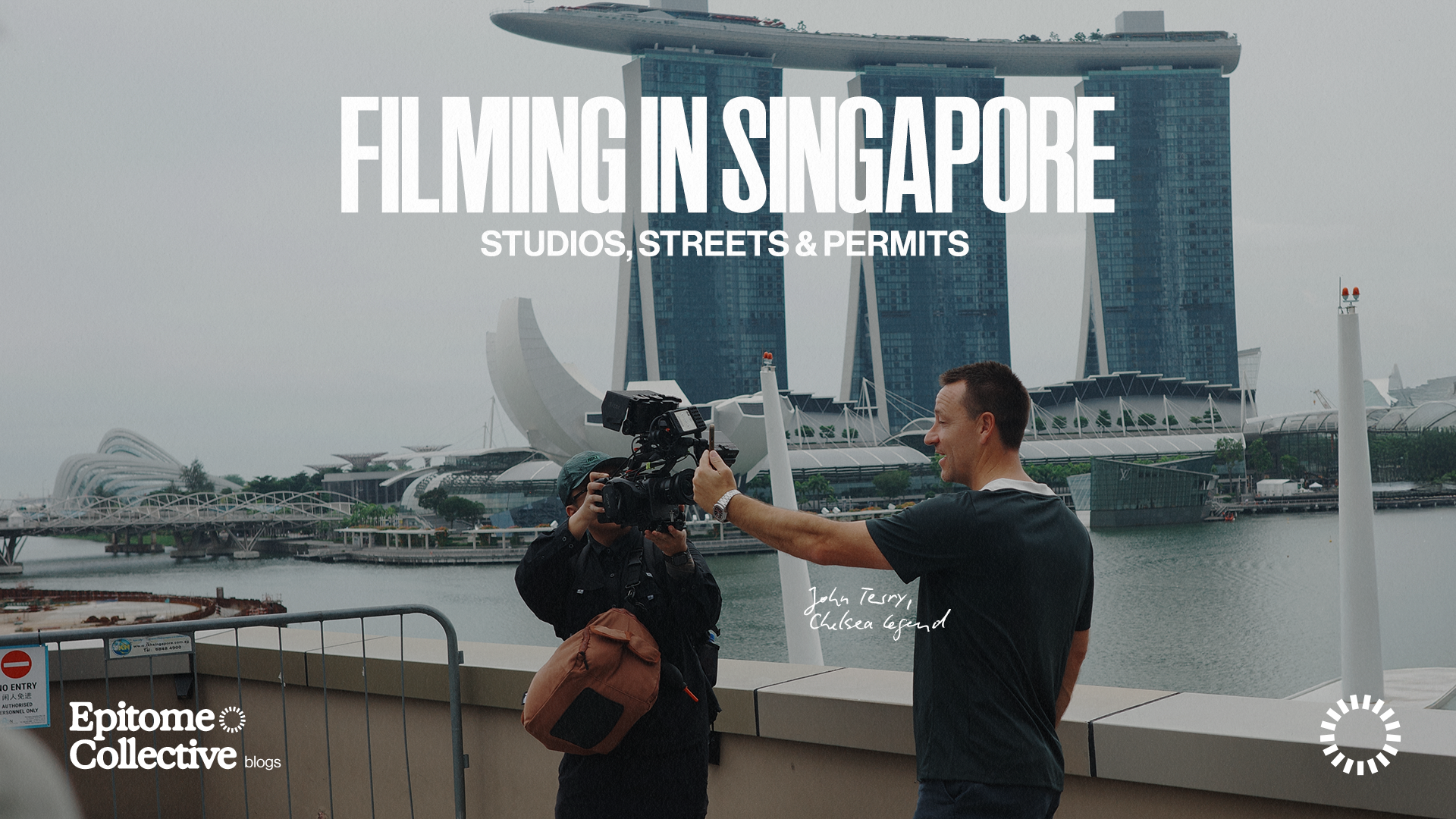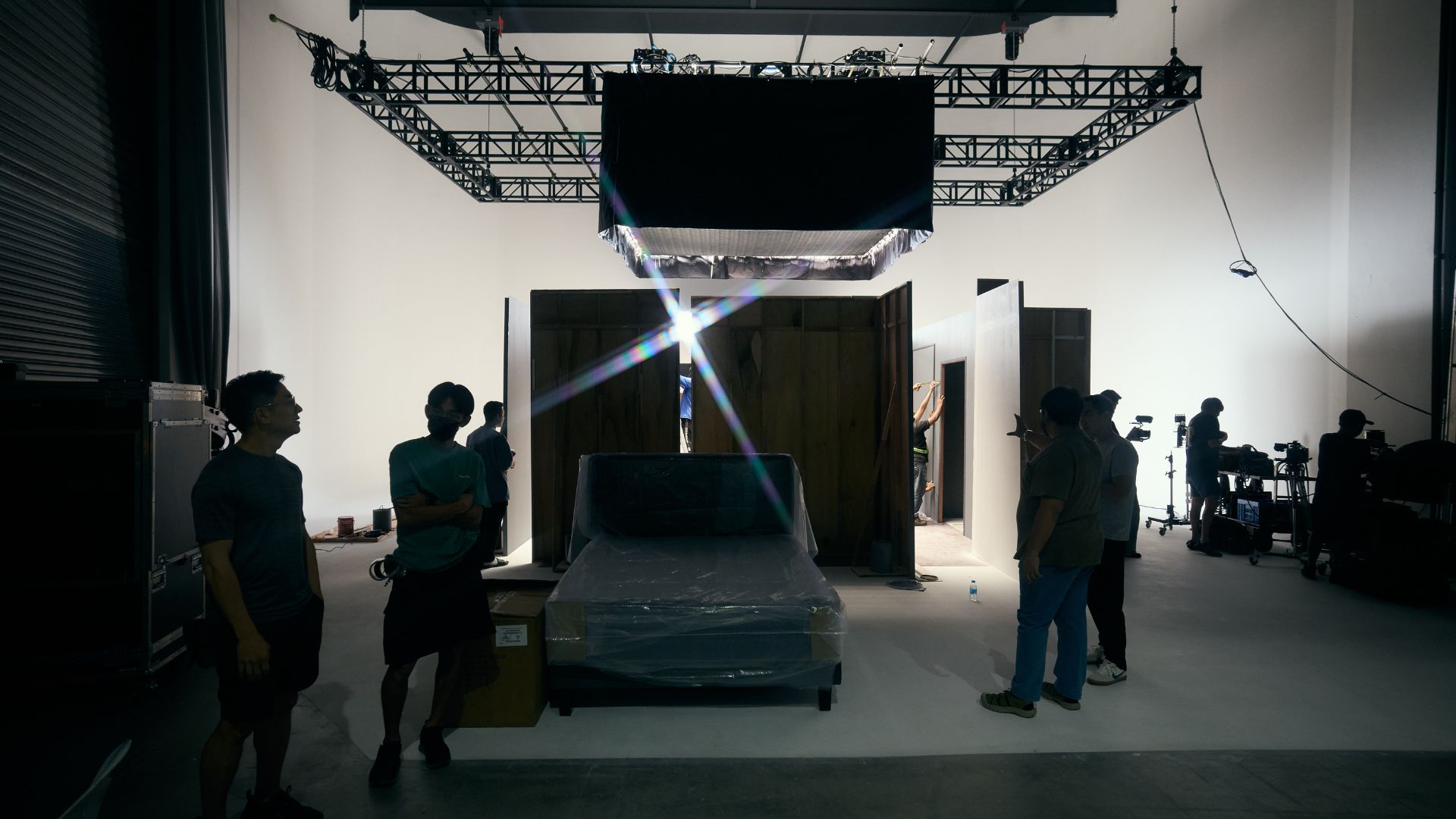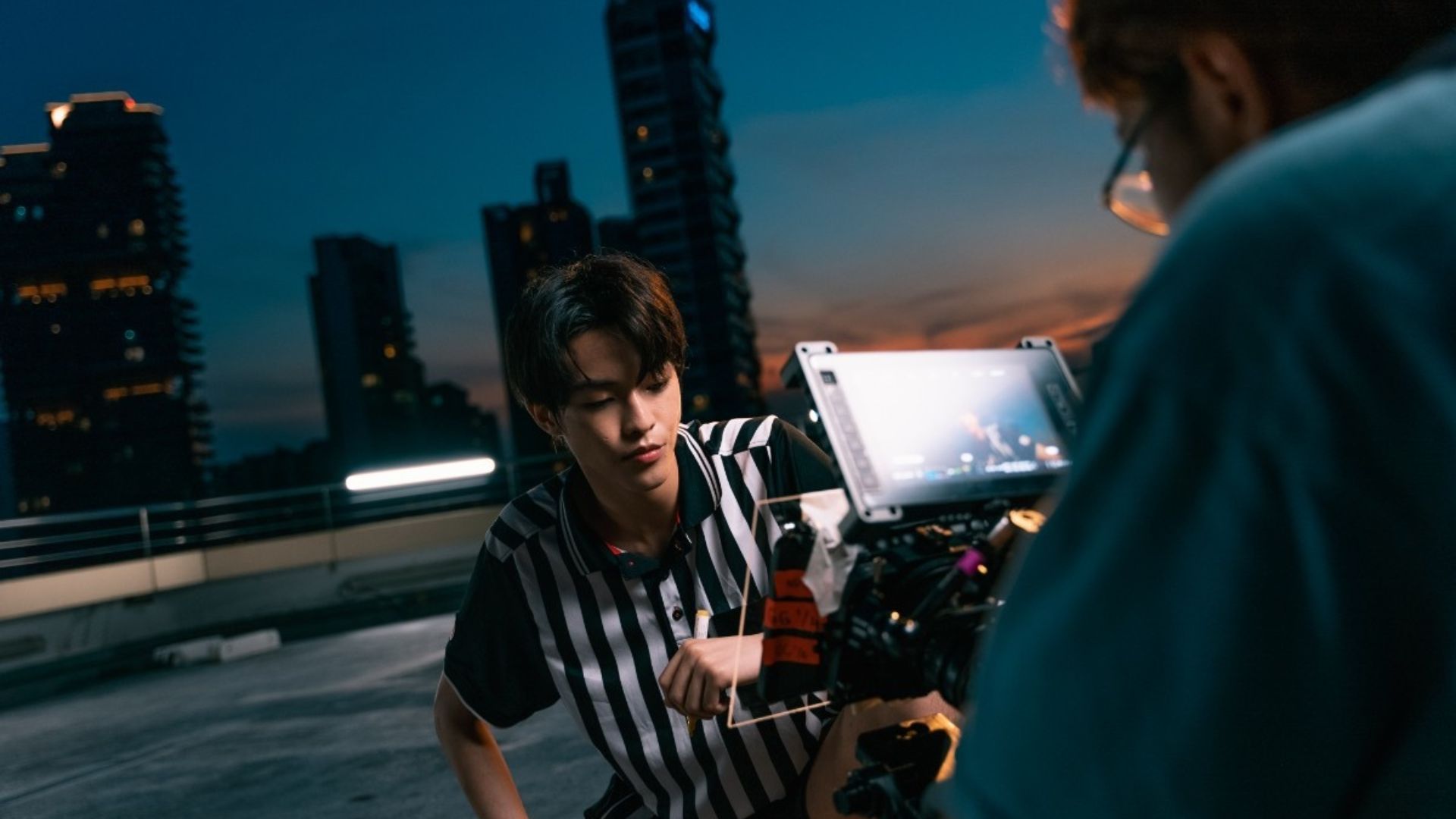Filming in Singapore: Studios, Streets and Permits

Studio vs Location Filming in Singapore
Singapore is a filmmaker's dream. Within a 30-minute radius, you'll find gleaming skyscrapers, colorful heritage shophouses, lush tropical gardens, and sleek minimalist interiors. The visual diversity is incredible, but here's the catch: having great locations doesn't automatically mean you'll get great footage.
The real decision that shapes your entire production? Choosing between filming in a studio or on location.
It sounds simple, but this choice affects everything: your budget, your timeline, what permits you need, how much control you have over lighting and sound, and ultimately, whether your shoot day runs smoothly or turns into an expensive scramble.
For marketers planning their first professional video shoot, understanding the trade-offs between studios and real-world locations can mean the difference between content that delivers and content that disappoints.
This guide walks you through:
- How to choose the right filming environment for your goals
- What studios and location shoots each offer (and where they fall short)
- Singapore's permit requirements and who handles them
- The practical logistics that keep shoot days on track
Think of this as your roadmap before the cameras start rolling.
How to Choose Between Studio and Location Filming

Before you start thinking about cameras or lighting, you need to answer one fundamental question: where should we film this?
Most video shoots in Singapore fall into two categories: studio-based or on-location. Each has its strengths and limitations, and picking the wrong one can create problems that no amount of editing can fix later.
Start with Your Story, Not the Space
Don't choose a location because it looks cool on Instagram. Choose it because it serves your message.
Ask yourself: Do you need total control over every visual and audio element? Or is capturing real-world context and authenticity more important? A CEO interview requires very different conditions than a lifestyle video shot in a bustling café.
Match Your Video Format to the Right Environment
Different types of content work better in different settings:
- Interviews and corporate videos work best in studios or quiet offices where you can control noise and lighting
- Product demonstrations benefit from studio consistency: repeatable lighting, clean backgrounds, and close attention to detail
- Brand films and social media content often shine on location, where real environments add depth and storytelling power
- Hybrid productions combine both. Use controlled studio shots for key messages and location footage for atmosphere and context
Consider Where Your Audience Will Watch
Think about where this video will live. High-end B2B content needs polish and professionalism. Social-first videos often perform better with a more authentic, grounded feel. Let your platform guide your creative choices.
The 4C Framework for Deciding
When you're stuck between options, run through these four questions:
- Creative Fit: Does this location enhance your story or limit it?
- Control: How important is consistency in sound and lighting?
- Cost: Can your budget handle location logistics or studio rental fees?
- Compliance: Will permits, restrictions, or safety requirements complicate things?
Your location decision doesn't just change how your video looks. It determines how your entire production runs. Get it right, and everything else falls into place.
Studio Filming: Complete Control Over Your Production

So what does "getting it right" look like when control matters most? That's where studios come in.
Studio shoots give you something no outdoor location can match: total control. When you need precision, predictability, and a polished final product, a studio environment is your most reliable option.
Why Studios Work
Studios are built for consistency. Blackout conditions, professional lighting grids, controlled acoustics, and secure access eliminate most of the variables that can slow down or derail a shoot.
This makes them perfect for:
- Sit-down interviews with senior executives
- Product demos that need clean, distraction-free backgrounds
- Green screen or visual effects work where post-production is critical
- Training videos or explainers that require a uniform look across multiple segments
What Studios Cost in Singapore
Singapore has studios ranging from compact setups in Tai Seng and Bukit Merah to full-scale soundstages in One-North or Changi with high ceilings, pre-lit cycloramas, and drive-in access for large equipment.
Typical rental rates run from SGD 500 to SGD 2,000 per day, depending on:
- Studio size and available amenities
- Whether lighting and grip equipment are included
- Air-conditioning and soundproofing quality
- Access to green rooms, makeup areas, or client lounges
The Operational Benefits
Studios solve the problems that often plague location shoots:
- Sound: You're isolated from traffic, conversations, and ambient noise
- Lighting: Setups stay consistent between takes and across shoot days
- Time efficiency: No weather delays or last-minute permit issues
- Security: Equipment is safer and access is easier to manage
When Studios Don't Work
Here's the trade-off: studios can feel sterile. If your story depends on cultural authenticity, human energy, or environmental context, a studio might limit your creative impact rather than enhance it.
When atmosphere matters more than precision, it's time to consider the alternative: filming on location.
On-Location Filming: Authenticity That Connects

Location shoots remain the go-to choice for brand films and lifestyle content for one simple reason: real environments carry an energy you can't recreate in a studio. Whether it's a busy café, a minimalist office, or a rooftop with skyline views, actual locations provide context that feels immediate and lived-in.
Why Real Locations Matter
The visual and emotional texture of a real place helps your audience connect. You're not just showing a product or service. You're showing the world it lives in. That distinction matters for storytelling, brand positioning, and creating genuine emotional resonance.
Location shoots work best for:
- Lifestyle sequences where talent interacts naturally with their environment
- Corporate stories set in real offices or facilities
- Retail or hospitality campaigns showcasing actual brand spaces
- Narrative-driven content where the setting shapes the story
The Challenges You'll Face
Here's what you trade for that authenticity: control. Location shoots mean working around constraints and adapting to circumstances.
Expect to navigate:
- Ambient noise: Traffic, conversations, construction, and overhead aircraft can interrupt your takes
- Access limitations: Loading zones, elevator schedules, and building restrictions may complicate equipment movement
- Weather risks: Rain or shifting light can disrupt continuity or force expensive reshoots
- Time pressure: Venue access windows and permit limits often compress your schedule
- Unexpected variables: Foot traffic you didn't anticipate, power limitations, or reflective surfaces that create lighting issues
Common Location Types in Singapore
Each location type brings its own considerations:
- Offices: Great for corporate videos, but watch for sound bleed and layout constraints
- Retail spaces: Ideal for branded storytelling, but usually require after-hours filming and special permits
- Public areas: Visually rich and dynamic, but demand careful planning for permits, crowd management, and safety protocols
Location shoots deliver unmatched realism, but they require meticulous planning. The best results come from anticipating problems before they arrive on set. And speaking of problems, one of the biggest ones catches unprepared teams off guard: permits.
Singapore Filming Permits: What You Need to Know
Singapore's urban density means that filming in public or commercial spaces almost always involves government approvals, safety protocols, and operational permits. If you're planning to shoot anywhere outside a private studio, you'll likely need permission.
When Permits Are Required
You'll generally need a permit when your shoot:
- Takes place in public spaces like parks, streets, or HDB estates
- Involves tripods, lighting equipment, or a crew larger than three people
- Uses drones or requires restricting public access
- Happens in commercial venues or outside normal business hours
Even small handheld shoots may require approval in certain areas, particularly if there's any risk of disrupting public activity.
The Key Authorities to Work With
Different government agencies oversee different types of locations:
- URA (Urban Redevelopment Authority): Handles filming in central civic districts, pedestrianized areas, and major landmarks
- LTA (Land Transport Authority): Required for shoots near or on roads, walkways, or public transport infrastructure
- NParks: Manages permits for public parks, nature reserves, and gardens
- SPF (Singapore Police Force): Provides approvals for crowd control, drone flights, or filming with security implications
- Venue operators and private landlords: Necessary for malls, office buildings, private shophouses, or co-working spaces
How Long Permits Take and What They Cost
Planning timelines matter:
- Simple requests (small team in a park): approximately 3 to 5 working days
- Complex shoots (multiple agencies or major roads): 2 to 4 weeks or more
- Fees vary widely from nominal processing charges to several hundred dollars depending on location and impact
Why You Should Never Skip This Step
Trying to film without proper permits can result in:
- Immediate shutdown by enforcement officers
- Fines or legal citations
- Loss of venue access for your company's future projects
- Embarrassment for your brand and damaged client relationships
A good production partner handles permit applications early, coordinating with all relevant agencies and stakeholders well before shoot day. It's not just paperwork. It's production insurance.
How Epitome Collective Approaches Location Planning

At Epitome Collective, location planning isn't an afterthought. It's where creative vision and production strategy come together. We treat every filming location as more than just a backdrop. It's a core element of your story, your schedule, and the entire on-set experience.
Our Process for Simplifying Complex Shoots
Location analysis: We match your creative requirements with visually compelling, logistically feasible locations. More importantly, we flag potential risks before they become actual problems.
Permit management: Our team handles all communications with URA, LTA, NParks, and venue operators. We build realistic timelines around actual approval cycles, not wishful thinking.
Logistical mapping: From elevator access to equipment staging to sound mitigation, we create contingency-aware plans that keep crews moving and clients calm.
Creative adaptability: We shape scripts and shot lists around location realities without sacrificing creative impact.
Why Strategic Location Planning Matters
Location success isn't just about logistics. It's about momentum. When environments support the crew, the schedule, and the creative vision, everything flows naturally. When they don't, even the best concept struggles to come to life.
Working with a partner who sees location as strategy, not just scenery, makes all the difference between a smooth production and a stressful one.
Making the Right Location Decision for Your Next Video
Choosing between studio and location filming isn't just creative. It's strategic. This decision shapes your budget, schedule, and how effectively your message lands with your audience.
Studios deliver control and consistency. Locations offer authenticity and storytelling depth. Both can work brilliantly when matched to the right project and backed by solid planning.
The difference between a smooth shoot and a stressful one? Treating permits, power access, and contingencies as priorities, not afterthoughts.
At Epitome Collective, we plan each shoot with the complete picture in mind: creative, operational, and contextual. Ready to plan your next video? Use our Location Suitability Checklist or reach out for tailored recommendations on where and how to film your story.
.png)
.png)
